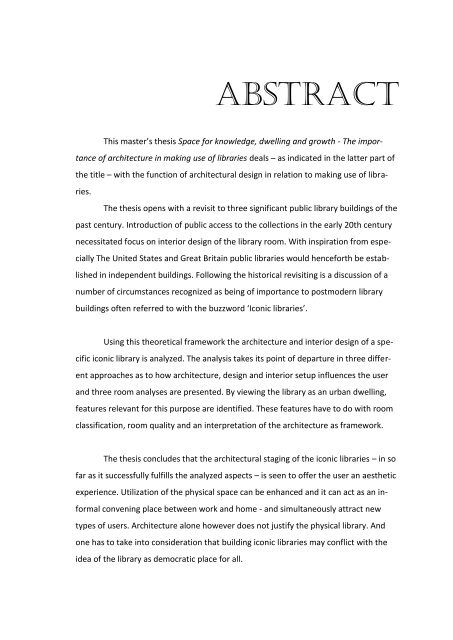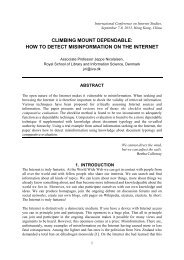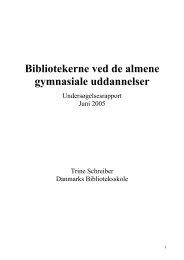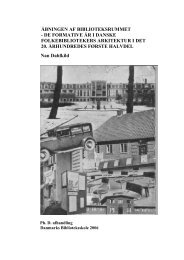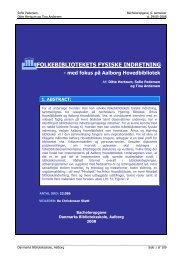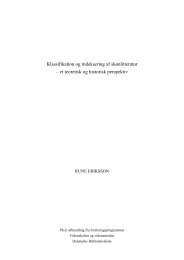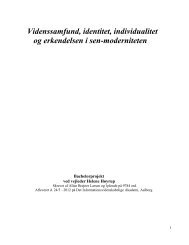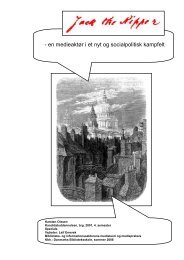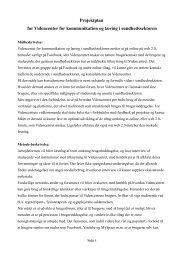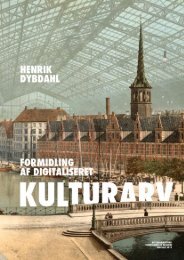Rum for viden, væren og vækst - Forskning - IVA
Rum for viden, væren og vækst - Forskning - IVA
Rum for viden, væren og vækst - Forskning - IVA
Create successful ePaper yourself
Turn your PDF publications into a flip-book with our unique Google optimized e-Paper software.
Abstract<br />
Abstract<br />
This master’s thesis Space <strong>for</strong> knowledge, dwelling and growth - The impor-<br />
tance of architecture in making use of libraries deals – as indicated in the latter part of<br />
the title – with the function of architectural design in relation to making use of libra-<br />
ries.<br />
The thesis opens with a revisit to three significant public library buildings of the<br />
past century. Introduction of public access to the collections in the early 20th century<br />
necessitated focus on interior design of the library room. With inspiration from espe-<br />
cially The United States and Great Britain public libraries would hence<strong>for</strong>th be estab-<br />
lished in independent buildings. Following the historical revisiting is a discussion of a<br />
number of circumstances rec<strong>og</strong>nized as being of importance to postmodern library<br />
buildings often referred to with the buzzword ‘Iconic libraries’.<br />
Using this theoretical framework the architecture and interior design of a spe-<br />
cific iconic library is analyzed. The analysis takes its point of departure in three differ-<br />
ent approaches as to how architecture, design and interior setup influences the user<br />
and three room analyses are presented. By viewing the library as an urban dwelling,<br />
features relevant <strong>for</strong> this purpose are identified. These features have to do with room<br />
classification, room quality and an interpretation of the architecture as framework.<br />
The thesis concludes that the architectural staging of the iconic libraries – in so<br />
far as it successfully fulfills the analyzed aspects – is seen to offer the user an aesthetic<br />
experience. Utilization of the physical space can be enhanced and it can act as an in-<br />
<strong>for</strong>mal convening place between work and home - and simultaneously attract new<br />
types of users. Architecture alone however does not justify the physical library. And<br />
one has to take into consideration that building iconic libraries may conflict with the<br />
idea of the library as democratic place <strong>for</strong> all.<br />
3


